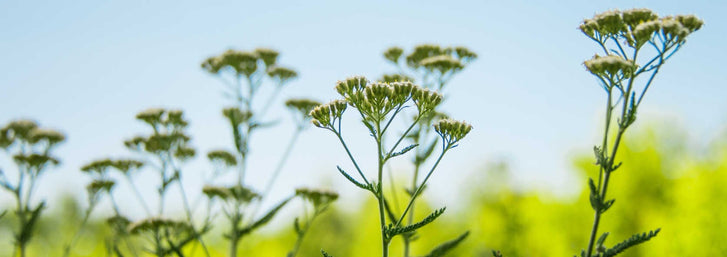
Jordan Freytag

Winter is coming! And we know what that means—it is time to rejuvenate your soil with cover crops. It is a bit late in the season to plant and expect immediate results, unless you’re planting cold hardy grain, like Winter Rye, Wheat, and Triticale, which can be sown nearly the day before the killer frost. Cold hardy grains are tenacious cover crops, ones that sprout up quickly and survive the icy winter and begin to grow again in the spring. In fact, these grains germinate in 34 to 40-degree soil, so this time of year is not only suitable for them, but ideal!
A majority of cover crops, such as collards, daikon radish, and clover if planted in the late summer or fall will die over the long cold months, and the decomposing organic material left behind will provide an abundance of nutrients. However, if you plant them now, they won’t sprout, but they will be preserved in the soil until the soil loosens with the warmth of spring, at which point they will emerge and grow quickly, growing amongst the reawakened grains, until they need to be mowed down and left to decompose.
If you are late in planting your cover crops, you can follow the advice of some folks who get the best out of both cover crops by planting a mixture of them right now. This allows the hardy grain to grow and take hold of the soil as the other seeds lay dormant waiting for spring to arrive. So, when it does arrive you have a myriad of diverse plants serving “to build organic matter and soil structure, enhance soil microbial activity, and increase nutrient levels in the soil” (Terra Brockman, Seasons on Henry’s Farm: A Year of Food and Life On a Sustainable Farm).
Many people love to use buckwheat for cover crops because of its fast growth habit. It is a great cover crop with many benefits to the soil, save for fixing nitrogen levels, but it is most beneficial when planted and assimilated back into the soil in warmer months.
Included in a cover crop mixture that we carry—and love to use—are Field Peas and Hairy Vetch, which are considered some of the best nitrogen fixers around. And more than likely the field peas will sprout with the grains as they are known to be able to withstand frigid temperatures.
When it comes time to kill your crop, we prefer not to use and herbicide, but to mow down the plants at their base leaving the remaining material behind. According to Terra Brockman, “Timing is crucial,” meaning that it is important to allow enough time for the organic material on the surface to begin decomposing for a short period of time before tilling it into the soil, believing that if left on the surface too long, nutrients won’t make their way back into the dirt. However, there are different schools of thought on the matter; some growers leave their mulch (aka “green manure”) on the surface, believing that it aids in constructing a natural composition of soil where the majority of nutrients lie near the surface.
We’ve found that this choice is best left to the grower. Some methods are claimed yield better results, but it tends to vary on what area of the country your garden or large scale farm is located and what you are growing.
Let us know what works for you. We’d love to see or hear result from you folks. Email us your feedback at editor@trueleafmarket.com
Leave a comment
Your email address will not be published. Required fields are marked *
0 Comments
No Comments yet! Be the first to start a conversation
Further Reading

10 Natives of the Southwest USA for Pest Control
Written By Lara Wadsworth The Southwestern United States is a region incredibly unique to the rest of the country. The hot, dry weather can be challenging for plants and animals to thrive without additional help. That is why gardening with natives can ...

Ashleigh Smith
2024-04-157 min read0
Spring Into Action - Celebrating Earth Day
Written By Chelsea Hafer Spring is quickly arriving, and that means that Earth Day is near! Earth Day is the perfect occasion to appreciate our wonderful planet and all that it does for us and think of ways you can give back to it. In this blog post, w...

Ashleigh Smith
2024-04-154 min read0
Everything You Need To Know About Rain Gardens
Written By Lara Wadsworth Rain gardens are quickly gaining popularity for their perfect marriage of utility and beauty. What simply looks like a beautifully landscaped garden is actually a native habitat that serves as a storm drain and water sponge. B...

Ashleigh Smith
2024-04-085 min read1
Northeastern Natives for Attracting Beneficial Insects
Written By Lara Wadsworth The Northeastern United States is rich with American history, but did you also know that it is rich in plant biodiversity? Nature has learned through time how to work in harmony with the various species that attempt to thrive....

Ashleigh Smith
2024-04-086 min read1



